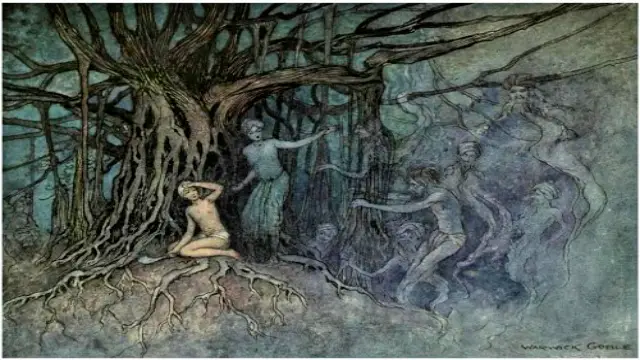India, a land rich in diversity, is home to a myriad of religions, castes, and sub-castes, each contributing to a treasure trove of supernatural myths and legends. Among these, the tales of haunted beliefs vary significantly across the different states, reflecting the cultural fabric of this vast nation. Ghost stories in India are often classified by factors such as religion, the circumstances of death, and the location of the haunting. A deeper exploration of these legends reveals how they intertwine with the traditional and religious frameworks that shape Indian society.
One of the most intriguing figures in Indian folklore is the Munja, also known as Brahmadaitya, a ghost rooted in the Brahmin community. The Brahmins, recognized for their extensive contributions to India’s knowledge and spiritual heritage, have long been associated with various myths and legends. The Munja legend is particularly notable, as it is linked to the Yajnopavita ceremony, also referred to as Poite. This sacred rite marks the initiation of a Brahmin boy, typically between the ages of 8 and 13, into Brahmanhood, allowing him to recite the revered Gayatri Mantra.
According to tradition, if a boy dies within ten days of his Poite ceremony, he is believed to transform into the Munja. This ghost is characterized by a sadistic nature and is said to haunt the Pipal tree (Ficus religiosa), a sacred symbol in Indian culture. The Munja is thought to be on the lookout for vulnerable victims, particularly targeting women and girls.
The legend warns that the wrath of the Munja can be provoked by actions that disturb or insult his dwelling. Reports have surfaced of individuals throwing stones at the Pipal tree, leaving waste nearby, or consuming alcohol beneath its branches. Such disrespect is believed to invite the Munja’s fury, leading to torment for those who offend him. Women who dispose of leftover food, especially bones, have been particularly vulnerable to his haunting.
The consequences of invoking the Munja’s anger can be severe. Folklore recounts tales of the Munja throwing stones at mischievous children, while more serious accounts describe how he possesses his victims, leading them to illness or even death. There are chilling stories of the Munja using thorns to prick his victims or scorching them with fire, leaving a trail of fear in his wake.
To protect themselves from the Munja’s wrath, villagers have developed various rituals and practices. Traditionally, they would construct platforms, known as Paar, around the Pipal tree and tie sacred threads around its bark as a form of reverence. Exorcists have also been known to use water as a protective measure against the Munja, warding off his malevolent influence.
The legend of the Munja serves as a fascinating glimpse into the intersection of culture, spirituality, and the supernatural in India. It highlights the deep-rooted beliefs that continue to shape the lives of many, reminding us of the power of folklore in preserving traditions and values. As we delve into these ghostly tales, we uncover not just stories of fear, but also the rich tapestry of beliefs that define the Indian experience.

